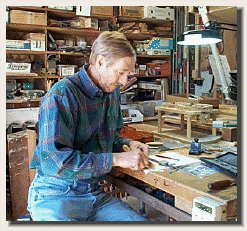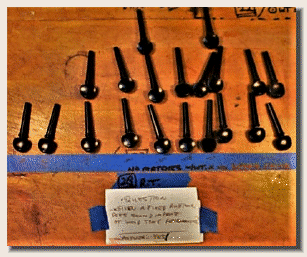Violin Rub Tones and Wood Tones, and how to use them to select superior violin wood parts...
(updated:117/2020
Page VRT_1)
...My name is David Langsather, an amateur violin maker and violin acoustical researcher, living in Salem, Oregon USA. Here I am introducing two new concepts; wood Rub Tones (2008) and Wood Tone (2017) and Synchronous Resonance (2020). Unless I am mistaken, these wood selection techniques, along with the Tap Tuning concepts for a adjusting the various wood components to ideal tap frequencies; along with excellent building technique, should enable the creation of truly exceptional instruments that will stand the test of time.
...This technique can be used to identify which parts of an instrument are not working with the rest of the instrument so that they can be replaced (If those parts are not the core body of he instrument) Examples would be fingerboard, nut saddle, end pin, sound post, bridge, tailpiece.. It can also be an important tool in deciding which instrument to purchase in the first place. Most importantly, I imagine that this technique should be the initial guide in selecting which pieces of wood are chosen to be joined into a new instrument; perhaps determining whether the instrument under construction will ever amount to something special to those who will hear it played.
...I believe that these techniques will also be a guide in selecting the proper bow for your violin, viola, cello, or double bass in the future . (198 HZ Wood Tone and # 22 Rub Tone; stick and frog).
...In summary, wood components of the same rub tone (# 22 is ideal), sound good together and any thing less than accurate "rub tone" agreement lessens the sound quality of the instrument when completed. The internal parts which can not be easily changed after construction such as ribs, corner and end blocks, top and back plates, the glue liner strips, and neck wood especially need this guide during construction as they are difficult to replace later..
...First, let us define "Rub Tones": Webster's dictionary defines 'rub' as: (vb) "to move along the surface of a body with pressure". For this application, I suggest you stroke a piece of wood with the long direction of its grain, touching it lightly. A rapid stroke will produce this characteristic 'hiss' sound. It is best to use a low toned soft wood stick (such as a low toned and unsharpened wooden pencil, although almost anything can be used including the tip of your finger or fingernail
..This 'rub tone' will vary with different similar wood boards (such as in a table top or wood floor) and there is a wide variety of 'rub tones' in identically make violin parts such as pegs, tail pieces, fingerboards, saddles, nuts, and fingerboards. Wood from the same tree exhibit a consistent 'rub tones' throughout.
..At this point I ask the reader to select a piece of soft wood, or your fingernail or really almost any object that will not scratch the surface of the subject piece of wood and lightly and rapidly stroke the surface of some wood samples, with the grain, listening for this characteristic 'hiss' or 'rub tone'.
...I suspect that this rub tone correlates to the speed of sound in the particular wood piece being tested. It is a permanent characteristic of that piece of wood and will not change with changing the size of the piece of wood. Wood with a higher 'rub tone' (more lively tone) would probably transmit sound at a greater speed than a similar piece with a lower (more muted) 'rub tone'.
...It might be a good thing for all the wooden parts to exhibit the same 'rub tone' characteristic; However, the # 22 rub tone is clearly the best sound quality and parts with higher or lower Rub Tones loose quality the farther they are from this apparently ideal # 22 rub tone.
..You can prove this to your self by the following method:
Select a number violin making wood pieces of the same Wood Tone (meaning on the wood tone scale: For the wood tone scale, these special desired frequencies are:( 176 HZ, 198 HZ, 213 HZ, 242 HZ, 287 HZ, 324 HZ)). Measure the rub tones of each of these pieces and arrange them in ascending order. Tap them in succession (or drop them on a hardwood table top) listening for sound quality change.
..Unless I am mistaken; you will hear a definite tonal improvement around # 22 rub tone.
I believe these results will permanently convince you to this new method of wooden instrument material selection!




